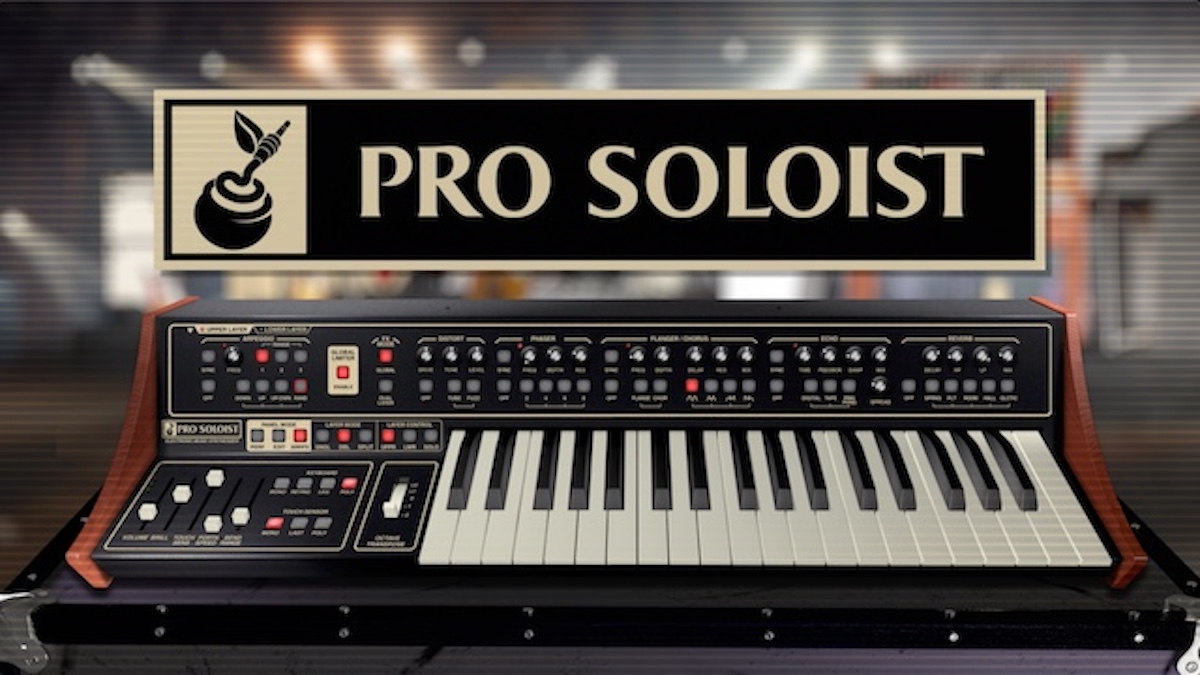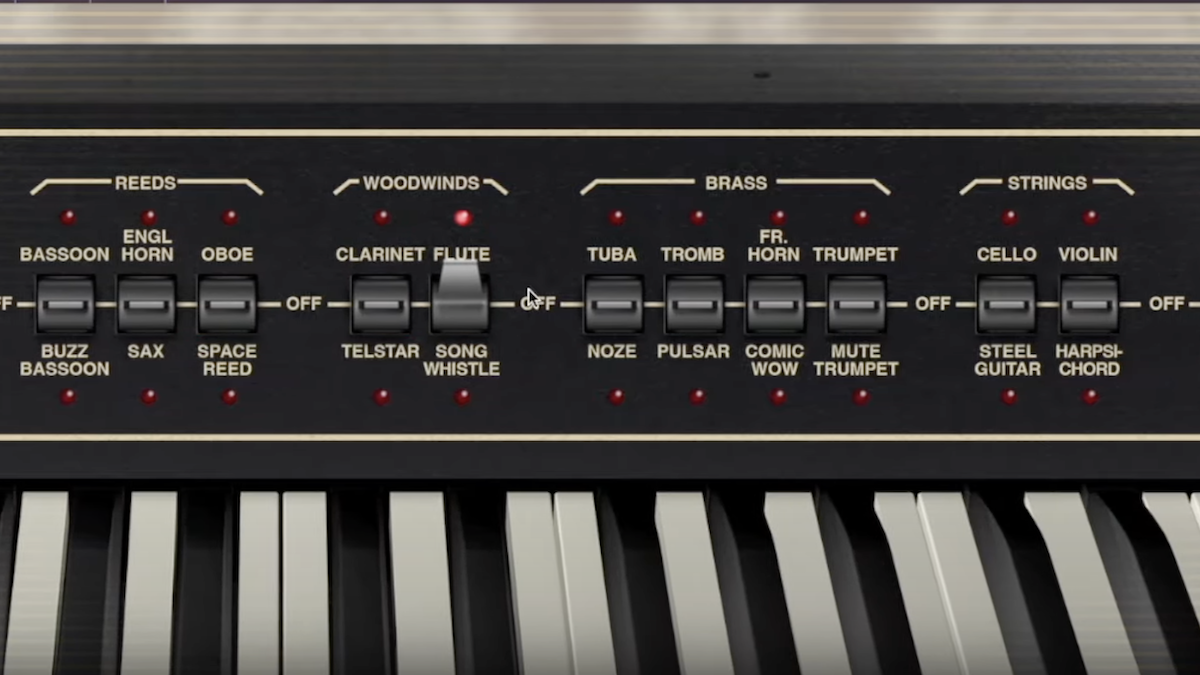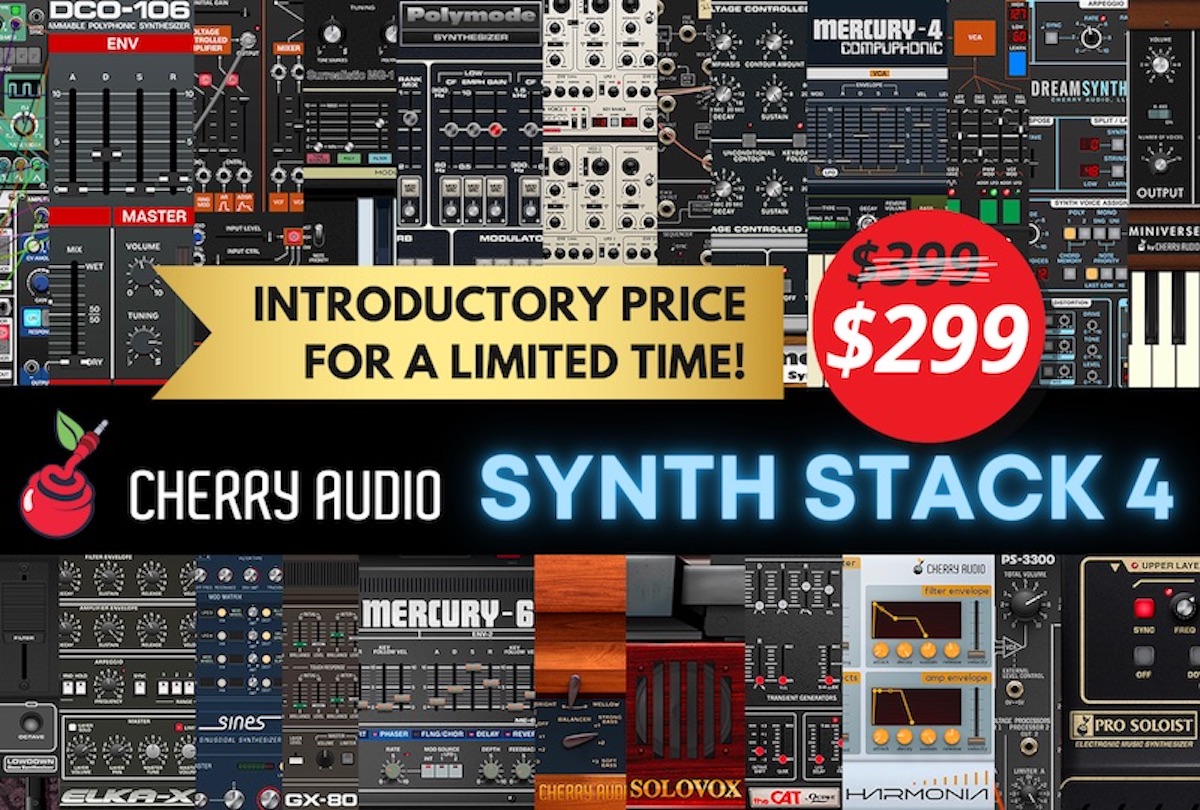Cherry Audio has revived the ARP Pro Soloist, a classic '70s synth used by Tony Banks, Herbie Hancock and more
You can buy it on its own or as part of the new Synth Stack 4, which offers 'everything Cherry Audio' in one collection
Cherry Audio has announced the newest in its line of synth emulations, Pro Soloist, and also its latest 'Everything' bundle in the form of the Synth Stack 4 Collection.
Let's deal with Pro Soloist first; it must be a fine line for a software developer to walk when it tries to emulate a classic synth, especially one that was not that well-endowed in its original 1970s form. Does it go for an accurate, but probably basic replication of the original, or massively expand the synth's capabilities?
The ARP Pro Soloist is just such a machine. It was a much beloved synthesiser - a player's machine, with its early aftertouch capability attracting solo noodlers such as Tony Banks, Chick Corea and Herbie Hancock, among many others – yet next to today's wonder synths, it's, well, just a 30-preset monosynth.
If you are Cherry Audio, what are you going to do? Go original, or go 2023?
Or, why not try both?

Yes, in the new Cherry Audio Pro Soloist, Cherry has 'picked' the best of old and new, vastly bumping up the original's specs so the software version has full programmability, polyphony, a dual-layer engine, an arpeggiator, a mod matrix, and effects.
The danger is, of course, that these extras could take it well away from the 1970s machine, but Cherry Audio has made sure that the core of the new instrument is faithful to the original. The developer worked with collaborator Mark Barton, who created an authentic reproduction of the machine's signal path and the 30 original presets. Then Cherry Audio company used that as the engine and ladled the extras (the cherries) on top.
Want all the hottest music and gear news, reviews, deals, features and more, direct to your inbox? Sign up here.
There's a dual-layer voicing architecture so you can mix and match two sounds at once, each with 16 polyphonic voices per layer and independent panning. With this feature alone you can create more complex tones which you can now save (again, unlike the original).
There's also a split keyboard mode and what Cherry Audio calls the 'Last Note' option that simulates polyphonic aftertouch using monophonic aftertouch controllers.

The Pro Soloist softsynth has a three-panel interface which kind of explodes the original synth's parameters – and more besides – outwards so you can get your grubby, tweaking paws on them. You get access to the original sounds in Performance mode, while in Edit mode, you get the keys to the analogue synthesis room including the Resonator Bank, which was behind the original's realistic orchestral sounds.
Cherry Audio has also increased the modulation options, which is to say that the software version actually has some! The LFO and envelopes from the original machine have been 'revealed', and a Super Wave oscillator and six-slot modulation matrix have been added.
To finish, the third panel reveals an arpeggiator and effects that include distortion, phaser, flanger/chorus, echo, and reverb.
It is a different beast, then - maybe like a 2023 supercar with a 1972 Ford Escort Mexico engine. Either way, as always with Cherry Audio, it's a bargain. Just $69 gets you an emulation of a machine that you could expect to pay $2,500 for if you bought an original, and if you're quick, you might even get it for a discounted $49 introductory price.
Find out more on the Cherry Audio website, but before you go, there's that other CA news!
The company has also announced details of its new Synth Stack 4 Collection. This is essentially 'Everything Cherry Audio' in one purchase, which sounds great to us. And while some companies will charge you a subscription to use all of their plugins, Cherry Audio is stacking them into this Collection 4 for a one-off payment of $399.
And if you don't think that is great value, that is actually a total of 19 vintage synth emulations, three original synths, a huge modular synth platform, and around 8,000 presets. You want more detail? Of course you do.

The full list (with links to full reviews where possible) is as follows:
- Voltage Modular
- Core + Electro Drums
- DCO-106 (Juno-106 emulation)
- CA 2600 (inspired by the ARP 2600)
- Surrealistic MG-1 Plus (Moog MG-1 recreation)
- Polymode (Moog Polymoog)
- Eight Voice (emulation of the Oberheim Eight Voice)
- PS-20 (Korg MS-20)
- Memorymode (based on the Memorymoog)
- Mercury-4 (Roland Jupiter-4)
- Quadra (reimagining of the 1978 ARP Quadra)
- Dreamsynth "a tribute to the celebrated hybrid analog/digital synthesizers of the mid-to-late 1980s"
- Miniverse
- Lowdown ("super-fat sounds of the most legendary dual-oscillator bass pedal synth")
- Elka-X (based upon the legendary Synthex)
- Sines (original polysynth)
- GX-80 (a Yamaha CS-80 and more)
- Mercury-6 (Roland Jupiter-6)
- Novachord + Solovox (two early electronic instruments)
- Octave Cat (recreation of The CAT duophonic synth)
- Harmonia (polyphonic synth)
- PS-3300 (1977 Korg)
- Pro Soloist (see above)
That's $399 for a set of synths that would cost over a grand individually, or just $299 if you buy before 5 December. That's around 14 bucks a synth!
More on Cherry Audio website.


Andy has been writing about music production and technology for 30 years having started out on Music Technology magazine back in 1992. He has edited the magazines Future Music, Keyboard Review, MusicTech and Computer Music, which he helped launch back in 1998. He owns way too many synthesizers.
